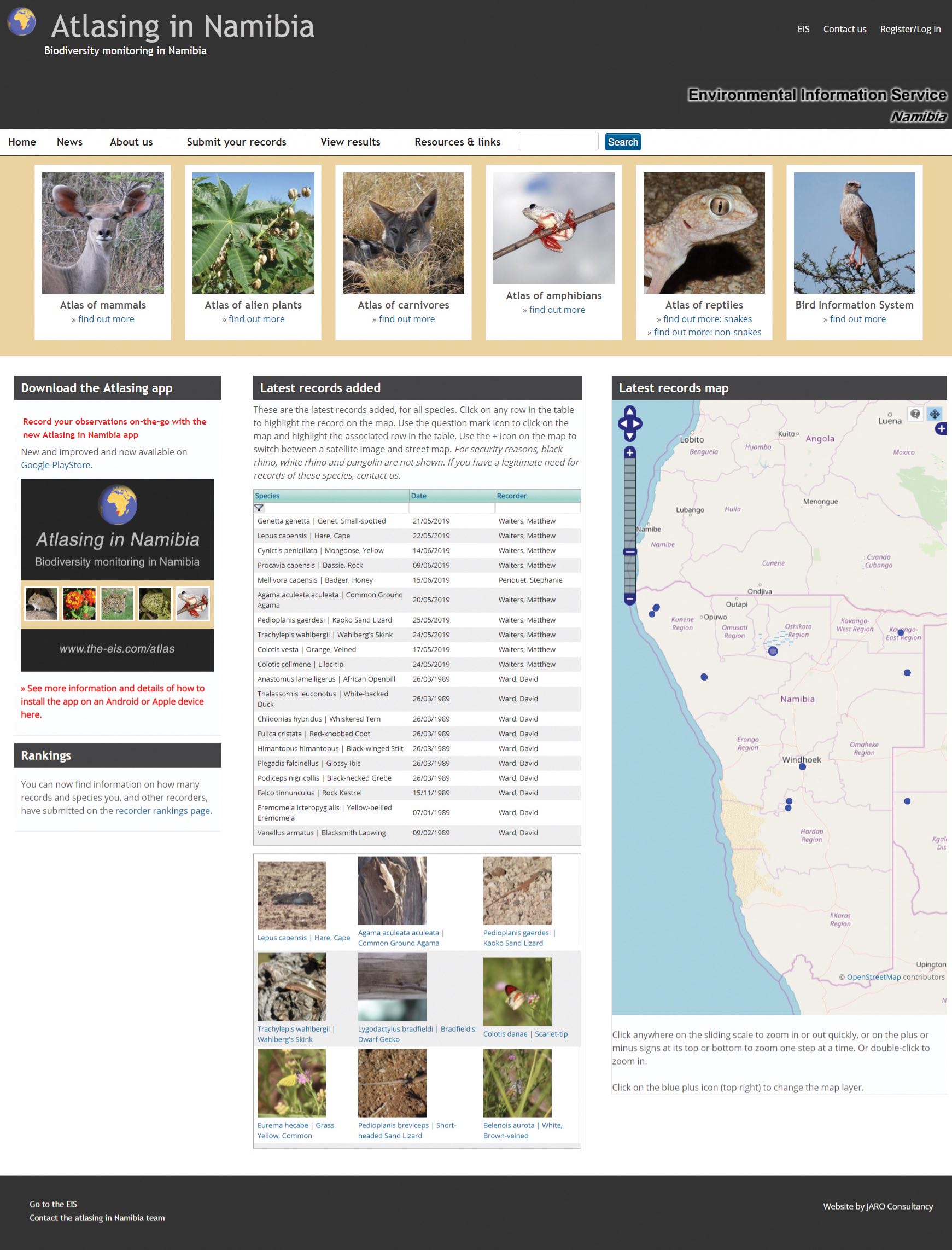
Namibia's Environmental Information Service
Dr. Chris Brown
Namibian Chamber of Environment
9th August 2019
There are few countries in the world that have better access to environmental information all in one place than Namibia. Indeed, in this regard we are the envy of many countries, including so-called developed or industrialised nations. And it all happens through Namibia's environmental one-stop-shop, the Environmental Information System (EIS)
About 15 years ago, four friends and colleagues – environmental scientists, programmers and IT specialists – decided to set up an electronic, web-based environmental information system and service for Namibia. With the support of the IT, Internet and web provider company Paratus, the EIS was born. Over the years, as small amounts of funding were secured to invest in the system, the EIS slowly grew in size and significance. It started with an electronic, on-line library. Today, this is Namibia's largest, most comprehensive and accessible library of environmental material – and it is free to anyone in the world who has access to the Internet.
A key objective of the EIS was to democratise access to environmental information. Whether you are a student, researcher, conservation manager, policymaker, learner or an interested member of the public, you can access the eLibrary from Windhoek, Warmbad, Katima Mulilo or anywhere in the world, including on your smartphone. Another feature of the eLibrary is that, in addition to published articles, it contains a large amount of “grey” literature: important reports, data sets, theses, presentations and other material that is not otherwise readily accessible.
The eLibrary has a user-friendly search interface. If you are interested, for example, in Climate Change, you simply enter those words in the search box and a list of all relevant reports and publications will be produced. You can then click on the articles that interest you and read them online or download them for free. If a listed article is not on the EIS, it will direct you via a link to the journal that published the article.
The EIS also has an easy Upload function so that you can submit your publications and reports into the system. They will be checked (to screen out inappropriate material such as advertising), key worded and loaded. This is one of the most effective ways of getting your work widely read and known, as the eLibrary is used by researchers, students, NGO and government staff, the private sector and more, both within Namibia and internationally.
The second component added to the EIS was a citizen science
public-participation atlasing programme to record and monitor Namibia's biodiversity (see screenshot below). You can enter plant and animal sightings via the website or the Atlasing in Namibia App (available on Play Store for Android devices and here for iOS devices). It currently has sections for recording mammals, reptiles, amphibians, butterflies, invasive alien plants and breeding birds.
By bringing Namibia's biodiversity data together, we can enhance their value and usefulness. Comparisons become possible across space and time, between and across species. To this end, several substantial datasets have been incorporated into the Atlasing system. Data from the system are freely available and have been used for many purposes including the upcoming Red Data book on Namibian carnivores.
Other components of the EIS include a photo library of landscapes in Namibia to monitor changes over time, a birds and powerlines interactive tool and the Cuvelai-Etosha river basin interactive tool.

The latest addition to the EIS is a scientific journal, the Namibian Journal of Environment, which publishes peer-reviewed scientific articles as well as editor-reviewed articles that facilitate quick publication of field notes and related observations.
As Namibia's one-stop-shop for the environment, the EIS provides 1) an easy-to-use platform for submitting environmental information; 2) a facility where this important information is curated and managed; 3) a place where scientists and others can submit papers and observations for publication; and 4) a place to go for all your environmental information needs. After 15 years of development and growth, we are pleased to present the EIS as an important tool to promote wise environmental management in Namibia – please use it.

For more information about the
Namibian Chamber of Environment
visit:
www.n-c-e.org
For more information about the
Namibian Chamber of Environment
visit:
www.n-c-e.org
For articles on similar topics, please click one of the following options:
If you enjoyed this page, then you might also like:



For more great articles from Conservation Namibia see below...
Conservation Namibia brought to you by:
We use cookies to monitor site usage and to help improve it. See our Privacy Policy for details. By continuing to use the site, you acknowledge acceptance of our policy.









